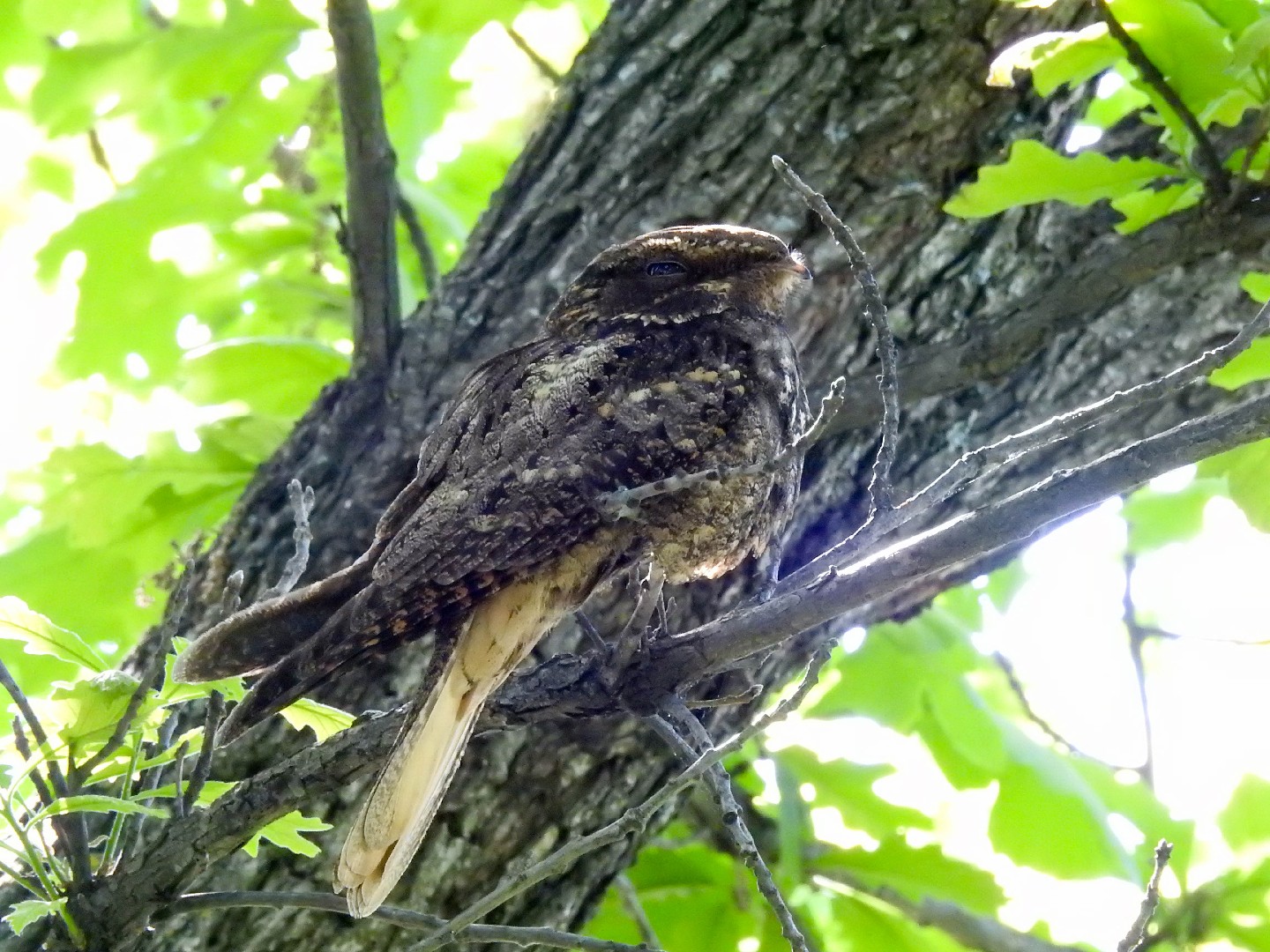Chuck-will's-widow
A species of Old World Nightjars Scientific name : Antrostomus carolinensis Genus : Old World Nightjars
Chuck-will's-widow, A species of Old World Nightjars
Botanical name: Antrostomus carolinensis
Genus: Old World Nightjars
Content
Description General Info
Description
The chuck-will's-widow has a short bill and a long tail typical of the nightjars. It has mottled brownish underparts, a buff throat, reddish-brown feathers lined with black, and brown and white patterning on head and chest. Males have patches of white on their outer tail feathers. It is the largest nightjar in North America. In length, it ranges from 28 to 33 cm (11 to 13 in). The wingspan can range from 58 to 66 cm (23 to 26 in). The body mass of the species is from 66 to 188 g (2.3 to 6.6 oz). Among standard measurements, the wing chord is 20.1 to 22.5 cm (7.9 to 8.9 in), the tail is 13 to 15.1 cm (5.1 to 5.9 in), the bill is 1.1 to 1.4 cm (0.43 to 0.55 in) and the tarsus is 1.5 to 1.9 cm (0.59 to 0.75 in). 
Size
23 - 41 cm
Life Expectancy
15 years
Nest Placement
Ground
Clutch Size
1 - 4 eggs
Incubation Period
1 brood
Number of Broods
20 - 21 days
Nestling Period
16 - 17 days
Feeding Habits
Chuck-will's-widow predominantly consume flying insects at night, with a diet focused on moths, various beetles, and dragonflies. Infrequently, small birds and bats are also consumed. Feeding behavior includes aerial insectivore activity.
Habitat
Chuck-will's-widow's habitat spans Southeastern United States forests, including mixed pine-oak woodlands, swamps, and rocky uplands, avoiding dense canopy areas. They breed in environments with rich understory vegetation for cover. In winter, chuck-will's-widow migrates to brushlands, thickets, and open fields, ranging as far as Colombia, Venezuela, and the Caribbean.
Nest Behavior
Chuck-will's-widow lays eggs directly on ground material, relying on camouflage for protection. Incubation is done by nearly invisible adults.
Nest Characteristics
Chuck-will's-widow's nests are located in dense thickets near clearings, with eggs laid on ground among dead leaves or pine needles, without a constructed nest.
Dite type
Insectivorous
General Info
Feeding Habits
Bird food type
Sounds
Song
Recording location: United States
Behavior
Chuck-will's-widow exhibits nocturnal habits, primarily vocalizing its distinctive call at night. These birds engage in foraging during twilight hours, leveraging increased visibility under moonlight or artificial lighting to hunt. In flight, chuck-will's-widow is agile, adept at capturing insects through brief dives and beak snaps aided by rictal bristles. Chuck-will's-widow's social dynamics include territorial pursuits, with males growling and engaging in aerial chases. Courtship involves a visual display: males droop wings, fan tails, fluff up plumage, and amplify calls to attract mates.
Scientific Classification
Phylum
Chordates Class
Birds Order
Nightjars and Relatives Family
Nightjars and nighthawks Genus
Old World Nightjars Species
Chuck-will's-widow 